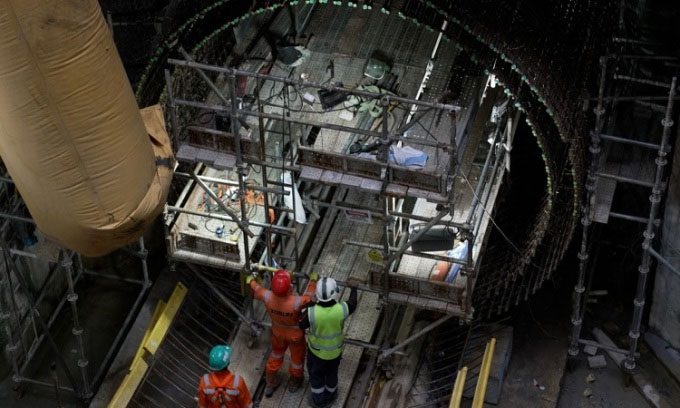Singapore engineers are constructing a tunnel network at a depth of 60 meters, capable of handling two million cubic meters of wastewater each day.
Originally planned in the mid-1990s, the Deep Tunnel Sewerage System (DTSS) serves as an underground “super highway” that could provide design insights for cities around the world. DTSS is part of an overarching plan to conserve two valuable resources: space and water.

Engineers mobilizing a tunneling machine to excavate the underground sewer. (Photo: Dan Hodge).
“We are faced with the challenge of a growing population and industrial development,” said Woo Lai Lynn, the chief engineer of the project managed by the Public Utilities Board (PUB) of Singapore. “With new demands, we cannot continue to rely on existing wastewater infrastructure. We need to find more sustainable solutions that provide greater resilience to our water supply.”
The first phase was completed in 2008 at an estimated cost of $2.5 billion, including 48 kilometers of underground sewer tunnels and a new centralized wastewater treatment plant. The second phase broke ground in November 2017 and is expected to be completed by 2026, according to Woo.
Once finished, approximately 200 kilometers of tunnels will transport wastewater to an underground treatment facility. Using giant tunneling machines, the construction team works underground to bore tunnels and install a network of pipes. “What excites me most is the uncertainties of this project. You cannot predict what you will encounter underground,” Woo shared.
The completed DTSS project will free up about 150 hectares of land above ground, according to PUB. The agency has applied numerous new technologies based on experiences from the first phase, including special concrete that can withstand erosion caused by microorganisms and embedding fiber optic cables within the tunnel lining to monitor the integrity of the structure without needing to send multiple teams underground. The design not only facilitates the treatment of two million cubic meters of wastewater daily but also provides important information and lessons on underground development for Singapore.
With limited land area, Singapore has begun utilizing underground space for purposes beyond transportation over the past decade. The Jurong Town Corporation (JTC), the government agency responsible for industrial development, is storing liquid hydrocarbons such as crude oil in five massive underground caverns. Named Jurong, this cavern complex has a capacity equivalent to 600 Olympic-sized swimming pools, freeing up valuable land above.
In the overall underground planning, the Urban Redevelopment Authority (URA) of Singapore has tasked Arup, an independent engineering, design, and planning firm, to assess and develop underground space development studies. One of the key focuses is on sustainability, according to Peter Stones, an engineer at Arup. Through a team of engineers gathering information before starting the project, authorities can mitigate risks and enhance the longevity and sustainability of underground structures.


















































